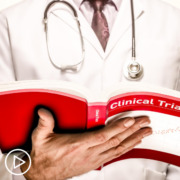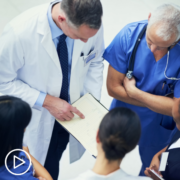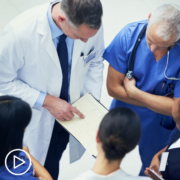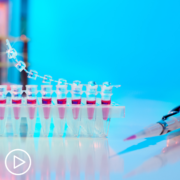Navigating AML Treatment Decisions
Navigating AML Treatment Decisions from Patient Empowerment Network on Vimeo.
What factors can help determine the best treatment path for your AML? This animated video walks through important considerations that may help in navigating treatment decisions, including how genetic testing results, treatment goals and patient preference can impact your choice.
Related Resources:

|

Confused About AML Genetic Testing and Treatment? What You Need to Know |

|
Transcript:
Hi, I’m Gina. I’m a nurse practitioner and I specialize in acute myeloid leukemia, or AML.
When diagnosed with AML, it’s important to take steps to get a deeper understanding of your disease, and the available treatment options, so that you can feel confident in your care decisions.
Before we walk through the important steps to decide on a treatment path, I want to remind you that this video is intended to help educate AML patients and their loved ones and shouldn’t be a replacement for advice from your doctor.
OK, let’s get started.
The first step is to understand your diagnosis, so that you can find out what treatments are available to you. Unlike solid tumor cancers, such as lung or breast cancer, AML is not staged. Instead, your physician will use lab testing, including blood and bone marrow tests, to determine the subtype of your AML and if you have any chromosomal abnormalities to determine if your AML is low, intermediate or high-risk.
Knowing your risk can impact your prognosis and help establish the best treatment option for you. If you don’t know your subtype, ask your doctor for the information and if you may need further testing to reach a more accurate diagnosis.
Testing that identifies characteristics unique to YOUR AML can impact your treatment options and determine if a targeted therapy or immunotherapy might be more effective. These tests include:
- Molecular testing
- Cytogenetic analysis (or karyotyping), and
- Fluorescence in situ hybridization also known as a FISH test
Before you start any treatment, it’s essential to insist that you have had relevant testing.
Next, you should understand treatment goals. The first goal of AML therapy is to get into remission. The second goal is to maintain that remission.
Induction therapy, or the first phase of treatment, is meant to induce remission. This first-line treatment kills as much of the disease as possible and returns blood counts back to normal.
Consolidation treatment, also referred to as post-remission therapy, is used to prevent leukemia cells from returning and maintain remission. In some patients, stem cell transplant acts as a consolidation therapy. In others, additional treatment options to maintain remission can be explored.
The next step is to consider your treatment options with your doctor. It’s important to understand the approaches available for YOUR individual disease. AML treatments can include:
- Chemotherapy
- Targeted therapy
- Stem cell transplant
- Immunotherapy
- Clinical trials, which may provide access to treatments that are not yet approved.
Or, you may receive a combination of one or more of these treatments.
Once you understand the therapies that are available to you, it’s time to talk to your doctor about the risks and benefits of each option. Your doctor will also consider your age, overall health, and existing conditions before suggesting a treatment course.
So, what questions should you address when discussing your treatment goals with your doctor? Consider asking:
- Is stem cell transplant a viable option for you?
- Can you tolerate high-intensity therapy or is low-intensity therapy better for you?
- How will the treatment impact your quality of life and lifestyle?
- Are there short or long-term treatment side effects that may occur after you have completed treatment?
- What is the plan if the first approach to treatment isn’t effective?
- Is there a clinical trial that might be right for you?
- Is there a member of the team, such as a social worker, that can help you understand the potential treatment costs? And is there access to financial resources that can help you if needed?
Remember that you have a role in making decisions regarding your care. Insist that all of your questions are answered when making a decision with your healthcare team. If you don’t feel supported or you don’t feel heard by your healthcare team, then it is always best to seek a second opinion.
Finally, once you have gathered all the information, it may be helpful to talk it out with people you trust, such as a partner, friend or family member, to help you make a decision that you feel confident about.
Now, how can you put this information to work for you?
- Ensure that you have an accurate understanding of your diagnosis.
- Make sure you have had appropriate testing to establish your subtype and risk.
- Understand your treatment options and talk with your doctor about what’s best for YOUR AML.
- Remember, you are a partner in your care and have an active voice in finding the best treatment for you.
Visit powerfulpatients.org/aml to learn more about AML.

























